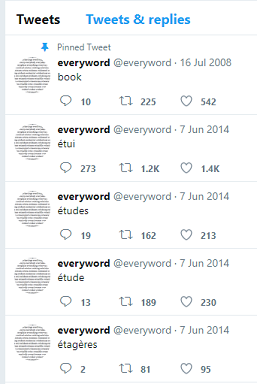Conceptual
Before actually attending class, I did not view electronic literature as a type of conceptual art. I assumed it would be something more along the lines of how print media was slowly transitioning into digital forms, just as how print newspapers are becoming more obscure as people gravitate toward online news sources. However, last week’s readings, as well as the articles assigned for this week, seem to introduce electronic literature as more of a visual art form. Though I’ve had a week’s worth of exposure to the concept of electronic literature as an entirely different art form from the kind I was expecting, the Lewitt and Dworkin readings on conceptual art and writing helped bring things into perspective. I had never before considered literature of any kind “conceptual art” – emblem poetry was the closest I’d ever gotten to perceiving literature as a visual art. Lewitt’s statement that conceptual art is “not necessarily logical” reaffirms my experiences with e-lit this past week, and solidifies my perception of e-lit as a conceptual art form over a variation of literature. I did not initially see an overlap between e-lit as a variation on literature and e-lit as an art form, but after reading that logic may be used to “lull the viewer into the belief that he understands the work,” I was reminded of the various plot twists and misdirections I have been exposed to while reading past literature. This week’s readings have definitely helped me make connections between e-lit and visual/perceptual/conceptual art, though I have not yet succeeded in shaking the feeling that I am trying to make sense of something completely random (such as the Kurt Schwitters conceptual twitter account). .jk.10.9.
A screenshot of the @everyword Twitter. This is a form of conceptual writing as "the idea or concept is the most important aspect of the work." The person behind the Twitter simply has to keep tweeting until every word in the English language has been tweeted. Carrying out this operation is easy because, as mentioned by Goldsmith, the planning and decisions are made beforehand."
